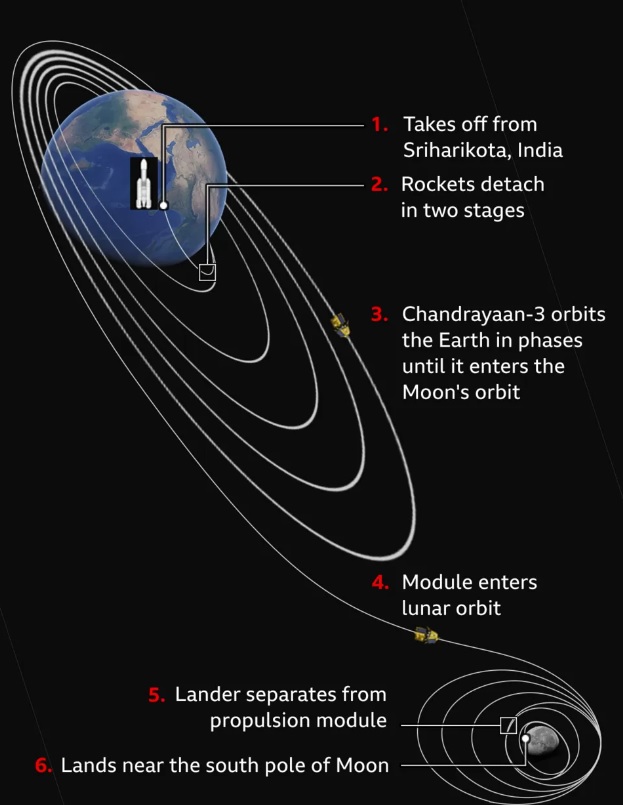With its Moon mission becoming the first to set foot near the lunar south pole, India has created history. India joined the US, the former Soviet Union, and China as the only other nations to successfully conduct a soft landing on the moon at 18:04 local time (12:34 GMT), The Vikram lander from Chandrayaan-3 successfully made landfall.
With its Moon mission becoming the first to set foot near the lunar south pole, India has created history, with this, India joins the US, the former Soviet Union, and China as the only other nations to successfully conduct a soft landing on the moon at 18:04 local time (12:34 GMT), the Vikram lander from Chandrayaan-3 successfully made landfall.
A few days have passed since Russia’s Luna-25 spacecraft crashed into the Moon after spinning out of control. The incident also brought attention to how challenging it is to land in the south pole region, where the terrain is “very uneven” and “full of craters and boulders.”
India’s second lunar mission, which similarly tried to soft-land there in 2019, was a failure. Its lander and rover were destroyed, but its orbiter was still intact. On Wednesday, stressful moments occurred before the touchdown as the lander, dubbed Vikram after Isro founder Vikram Sarabhai, started its perilous fall while carrying the 26-kg rover known as Pragyaan (the Sanskrit word for wisdom) inside its belly.
The lander’s speed was progressively decreased from 1.68 km/s to virtually 0 km/s, allowing it to land gently on the moon’s surface.
The six-wheeled rover will crawl out of the lander’s belly in a few hours, once the dust has settled, and travel among the rocks and craters on the Moon’s surface, gathering important data and photographs to be returned to Earth.
What will happen to India’s Moon mission next?
The search for water-based ice, which could one day enable human habitation on the Moon, is one of the mission’s main objectives. Additionally, it might be used to refuel spaceships traveling to Mars and other far-off planets. There is a sizable surface region that remains permanently under darkness, according to scientists, and may contain water ice stores.
Both the lander and the rover are equipped with five scientific equipment that will assist researchers in learning more about the Moon’s surface’s tectonic activity, atmosphere, and physical properties.
The rover is flying the Indian flag and has Isro’s insignia and logo engraved on its wheels so that when it moves, it will do so with those markings.

Isro officials said Chandrayaan-3, India’s third lunar mission, will assist in making some “very substantial” scientific discoveries and will aim to expand on the achievements of the prior Moon missions.
It comes 15 years after Chandrayaan-1, the nation’s first Moon mission in 2008, which proved that the Moon has an atmosphere during the day and found water molecules on its dry surface.
Even though the soft landing attempt failed, Chandrayaan-2 was not a total loss because its orbiter is still circling the Moon and would assist the Vikram lander in sending photographs and data to Earth for study.
There is a growing worldwide interest in the Moon, with many additional missions en route there in addition to India’s.

Photo Source: Indian Space Research Organisation

